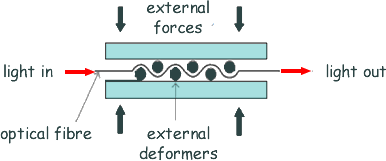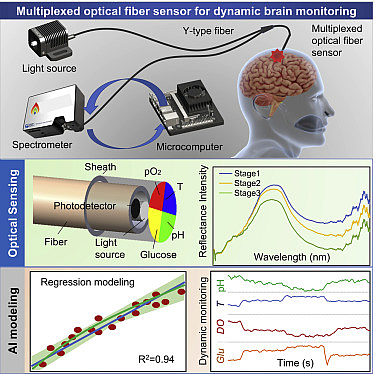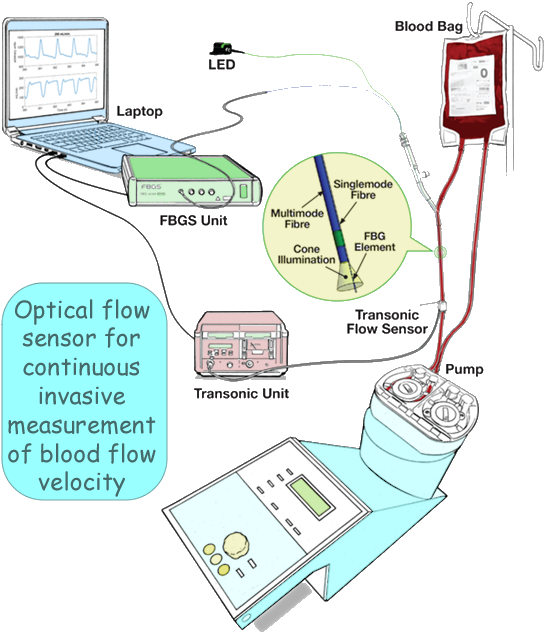Uses of Fibre Optic Cables: Sensors
 A Microbending
Sensor
A Microbending
Sensor
The microbend sensor was one of the earliest fiber optic sensors.
Microbend losses have always been a problem to the fiber optic cable designer, but it is this very same microbend loss effect in optical fibers which was exploited by the microbend sensor designer who adapted the microbend effect to the measurement of many physical parameters and physical variables such as temperature and pressure.
A microbending sensor
consists of two plates between which passes an optical fibre. The plates
have parallel grooves on their facing surfaces and the grooves from
the two plates interleave with each other.

The fibre passing between
the plates is therefore bent alternatively up and down.
When a fibre
is bent sufficiently the light in the core no longer meets the cladding
at an angle equal to or greater than the critical angle. Total Internal
Reflection therefore does not occur.
This is called microbending loss,
and the more a plate is bent, the more loss occurs.
This has a military
application of submarine detection.
 Blood
Components Sensor
Blood
Components Sensor
If we use the correct
wavelength we can measure the concentrations of specific components
of blood such as total protein, cholesterol, urea and uric acid quickly.
When the concentration is high, the output at the detector is less and
vice versa.
The concentrations of those chemicals are important to doctors
in the diagnosis and monitoring of certain disease conditions.
Fibre
optic sensors can give results very quickly without having to send samples
away to an analytical lab.
It is being adapted to many medical uses:




